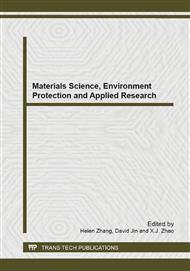p.457
p.461
p.465
p.469
p.473
p.477
p.481
p.485
p.489
Research on Pollutant Emission CEMS Remote Monitoring System Based on WEB and CAN Bus
Abstract:
The remote monitoring system is widely applied. The pollutant stationary source is distributed widely, so the pollutant emission status of the stationary source is difficult to on-time monitoring by EPA. The pollutant emission status remote monitoring system based on WEB and CAN bus is brought out in the paper. The remote monitoring system includes pollutant emission data collection unit, data transmission unit and EPA management unit. Soot emission concentration measurement method of the remote monitoring system adopts the Transmission-Scattering method and gaseous pollutant emission concentration measurement method adopts NDIR. The pollutant emission concentration data is collected by data collection unit and sent to data transmission unit through CAN bus. The pollutant emission data is sent to EPA management unit through WEB. The experiment result indicates that the remote monitoring system can on-line monitoring the pollutant emission status of the stationary source and improves the communication efficiency and accuracy.
Info:
Periodical:
Pages:
473-476
Citation:
Online since:
March 2014
Authors:
Keywords:
Price:
Сopyright:
© 2014 Trans Tech Publications Ltd. All Rights Reserved
Share:
Citation:


